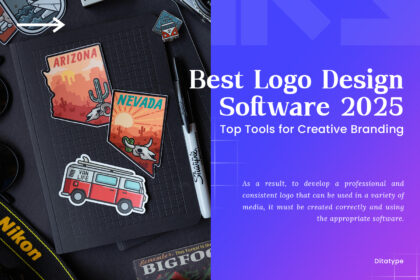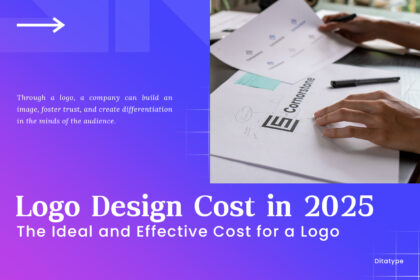In the modern branding world, a logo plays a crucial role as the main face of a brand. Modern design trends are largely leaning toward minimalism because it presents simple, recognizable forms that are adaptable across various media. This simplicity makes utilizing a minimalist logo more effective in conveying messages. It also helps maintain brand image consistency in the eyes of the audience.
In addition, the simplicity of design has a strong foundation in visual psychology to enhance readability and understanding. The human brain recognizes simple shapes faster than complex designs, making it easier for the audience to remember. In the digital ecosystem, minimalist logos also prove to be flexible, as they remain clear and readable even when displayed on small-sized media. In fact, several global brands such as Apple, Nike, and Google have proven that minimalist design can endure and remain relevant across various eras.
This article will expand readers’ understanding by outlining the definition of minimalist logos, the core principles underlying them, and case studies demonstrating successful application in practice. This discussion will help readers understand why minimalist logos are not just a visual trend but also an effective branding strategy.
Table of Contents
A minimalist logo is a visual identity design that emphasizes simplicity of form, the use of minimal elements, and the elimination of unnecessary details. The main goal is to create a symbol that is easily recognizable and flexible for use across various media. As a result, it can effectively convey a message without visual distraction. To place a minimalist logo in a clearer context, the discussion needs to begin by recognizing the existing types of logos. By understanding these different types, you will see how the minimalist approach plays a role in simplifying visual identity.
The principles in a minimalist logo serve as guidelines that ensure the design not only appears simple but also effectively functions as a visual identity. Without clear principles, a minimalist logo risks losing its meaning and simply appearing empty. This principle not only emphasizes reducing detail but also guides designers to filter visual elements until only the most essential forms remain, which are still functionally strong.
The characteristics of a minimalist logo are marked by simple shapes, limited use of color, and clean, easy-to-read typography. This design also utilizes empty space to maintain visual balance and highlight the main elements. With these characteristics, a minimalist logo can convey meaning while remaining flexible across various sizes and media.
Designers need to adhere to fundamental principles to ensure a minimalist logo functions as a strong visual identity. These fundamental principles are not only technical rules but also guidelines that help maintain a balance between aesthetics and functionality. With proper application, a logo can appear both simple and effective in conveying its message.
First, simplicity is at the heart of minimalist logos. The simple design allows the audience to quickly recognize and remember the logo. Excessive visual elements can actually distract from the main message, so it’s necessary to filter the forms down to the most essential symbols that are still strong in meaning.
Second, typography plays an important role in strengthening identity. Minimalist logos typically use simple, easy-to-read fonts that are consistent with the brand’s character. Choosing the right typography can add a professional, elegant, or modern touch without the need for excessive decoration in a logo.
Third, color choice is also crucial in a minimalist logo style. Generally, the color palette in minimalist style will be limited, for example, only one to three colors. This limitation helps maintain visual consistency while also creating a strong and recognizable impression. The chosen color should ideally represent the brand’s values or personality to make the message even stronger.
Finally, scalability ensures the logo remains clear and readable across various sizes and media. A good minimalist logo should look equally strong whether displayed on a large billboard or as a small app icon. This is important so that the brand identity remains consistent and easily recognizable in all contexts.
Minimalist logos have become popular because they meet the needs of fast-paced and information-dense visual communication. Audiences are currently inundated with various content daily, so they need visuals that are simple, concise, and get straight to the point. This is also why many major brands choose a minimalist approach in their visual identity. To understand further, here are some factors that explain the popularity of minimalist logos in the modern era:

Minimalist logos tend to be more memorable because their shapes are simple and don’t overload the brain with excessive detail. The human brain is indeed faster at recognizing patterns or concise shapes compared to complex elements. For example, we can see this in the large brand Apple; the bitten apple logo is very simple. This logo consists only of a silhouette with a few curves on certain sides; there is no lengthy text, excessive ornamentation, or excessive color. Precisely because of its simplicity, the Apple logo can be recognized at a glance, even from a distance or in a small size. Apple demonstrated that simplicity can be a great strength. Without having to display technical details, the logo already represents the brand’s premium, modern, and innovative identity.

A minimalist logo can convey the core message of a brand more clearly and directly. It also features truly essential elements, so the audience isn’t confused about interpreting the meaning behind it. For example, in the Amazon logo, the brand’s logo features simple text with an arrow from the letter A to Z, implying that Amazon provides everything from A to Z. The simplicity of the shape makes the message of the Amazon brand easy to understand at a glance.

A minimalist logo not only serves as an identity marker but also plays a role in evoking emotions in the audience. A clean and easy-to-understand logo makes people trust and connect with the brand more. Without confusing elements, the audience can clearly understand the message, making the brand feel more friendly, open, and approachable. The most obvious example is seen in the McDonald’s logo, which features a simple yellow letter M icon. Its curved shape is easily recognizable worldwide and consistently evokes a cheerful, warm feeling and a pleasant experience with fast food. Furthermore, the bright yellow color fosters a sense of joy while also attracting attention, and the simplicity of its shape keeps the logo relevant across generations.

One of the main strengths of using a minimalist logo lies in its timeless nature. Simple logos are less susceptible to changing trends, ensuring their continued relevance over time. That simplicity keeps the logo fresh while minimizing the need for major changes that could disrupt brand consistency. A real-world example can be seen in the Nike logo with the “Swoosh” symbol. The simple curved line in the logo represents the movement, speed, and energy that are synonymous with the world of sports. Albeit without excessive detail, this logo remains strong, easily recognizable, and adaptable across various media. This is what makes the Nike logo one of the best examples of timeless minimalist design.
Minimalism isn’t just about reducing elements; it’s about choosing the most important things to display. In logo design, this principle places each line, color, and letter as an element with a significant role. Therefore, to create an effective minimalist logo, designers can follow these tips as a guide to structure their designs more purposefully. Here’s the explanation:
When creating a minimalist logo, remember that simplicity is key. Avoid too much detail, as it will only make the logo difficult to remember and confusing for the audience. Additionally, focus on the main form that best represents the brand’s identity. A simple logo is easier for the audience to remember and recognize, even at a small size.
Use basic shapes like circles, triangles, or squares as the foundation of your design. These shapes look neat, balanced, and are visually easy to understand. For example, circles can give the impression of harmony, triangles indicate direction or movement, while squares symbolize stability. By sticking to geometric shapes, the logo will look consistent and professional without the need for excessive additional details.
Do not hesitate to leverage the white space. Instead of making it look empty, white space helps make the main element of the logo stand out. The wise use of white space creates a clean and organized impression that makes it easily understandable. Without white space, a logo may look too crowded, and therefore it is difficult to capture the audience’s attention.
Typography is one of the main elements in a minimalist logo. It will be preferable for designers to use simple, yet bold and easily readable fonts. Avoid using fonts that are too difficult to understand, as it will affect their readability. Choosing the right typography will not only strengthen the brand’s name but also its character. Whether you want your brand to look modern, friendly, or more professional, you can try to utilize Ditatype’s font collections for your minimalist design projects.
Lastly, minimalist design emphasizes how to make the essential elements stand out without needing too much detail. Therefore, a designer needs to make it a habit to ask themselves, “Is this element needed?” The answer to that question will ensure that the logo looks powerful, clear, and meaningful. The more you practice, the more skilled you will be in creating a simple logo with a strong character.
Minimalist logos are the solution for designs aiming for simplicity yet powerful in delivering the brand’s identity. By emphasizing the importance, readability, and consistency, a minimalist logo can be a timeless, memorable, and effective way to build a brand’s image in this ever-changing visual communication era.
As a designer, you need to comprehend the fundamentals and characteristics of minimalist logos to ensure your work has a sustainable appeal. Apply the tips we’ve explained above, and modify them according to your creativity. That way, you will surely be able to create the best logo that may look simple yet functional and full of character.


